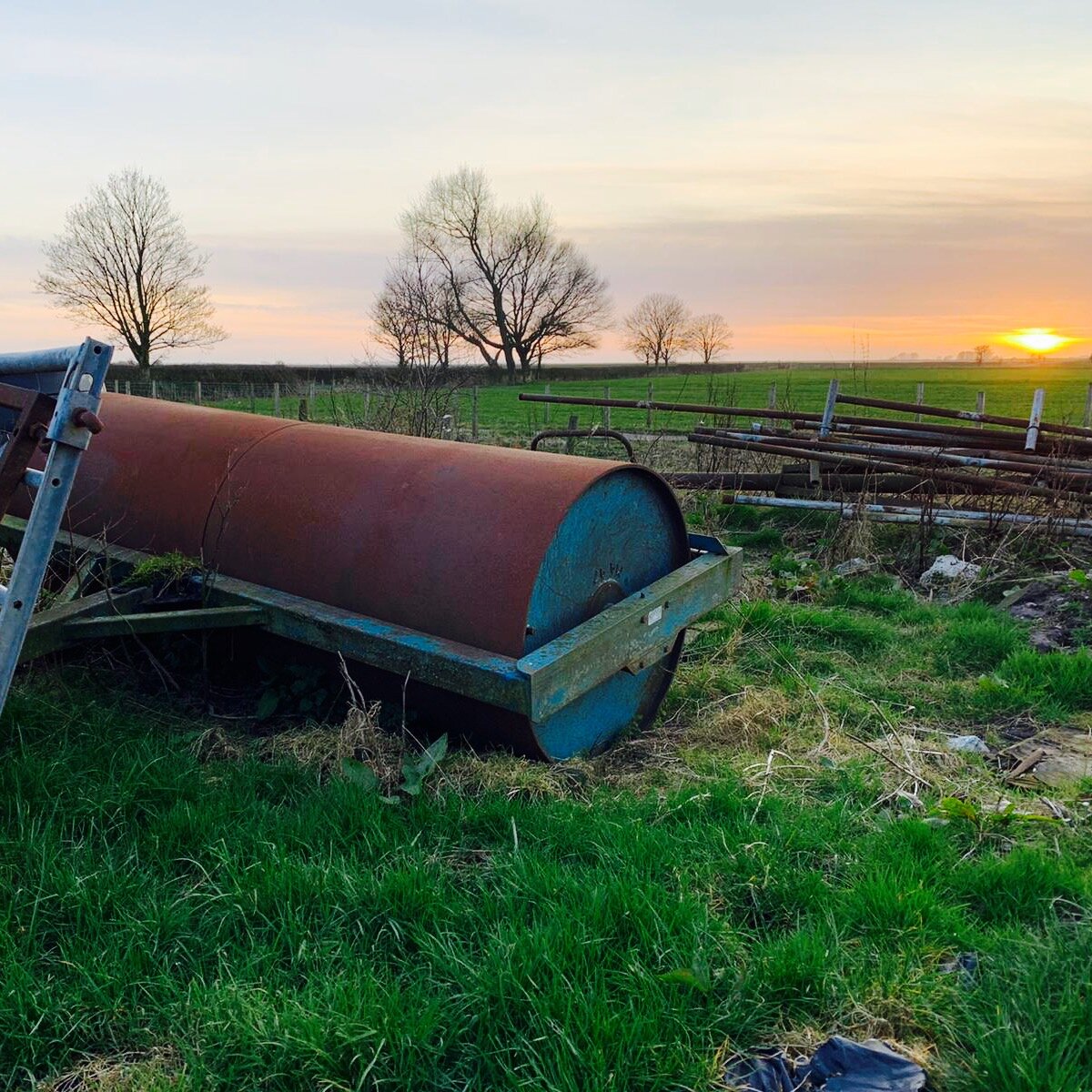Rolling in the Stones
The calendar says that the year starts in January, but for many farmers this is only when the date changes. For the arable farmers, the year starts in the autumn, for the livestock farmers it’s lambing and calving in the spring. The spring is a busy, hopeful time, a new start and a fresh beginning. There is a lot to do when conditions allow and one of the least glamorous jobs is rolling the grass pasture, but it’s a vital part of making great silage isn’t it?
What is the point of rolling grassland in the spring?
Flat rolling grassland after the winter obviously puts away stones and flattens out any tyre ruts and poaching but traditionally it was also about the soil and the roots. The thinking was that frost heave causes air pockets within the soil structure and this leads to poor conditions for roots leading to poor root development. Today we are more interested in getting more air into the soils and avoiding any unnecessary compaction.
So does rolling do more harm than good?
Some will argue that rolling grassland is not just a waste of time and diesel but it also causes actual harm to the ground. In the climatic conditions of the early 21st century, prolonged winter periods of frost are just not common in the UK. Frost heave is not really a problem for most farmers so perhaps you should get that roller on eBay and cross one job off the to-do list.
But hang on a moment, what about the stones?
Stones have been appearing in grass fields long before Michael Eavis ever invited Mick and his mates to Worthy Farm. Be it frost heave, worm action or dark forces, somehow stones get out of the soil and into the sward when no one is looking. And stones are really, really bad news for silage machinery so rolling at the right time can put them out of harm’s reach. The resultant damage might not be to your shiny bit of kit, but the contractor will get the costs back one day if your flintstones knacker his pride and joy. Large stones also kill the grass beneath them so for every stone there is also a grass yield penalty.
When rolling grassland is vital
Rolling can put the stones back where they belong and can also put the molehills and hoof-poaching marks out of the mowers reach too. And while this will undoubtedly save the windows, blades and paintwork, more importantly it will keep soil contamination out of your silage. There are some real penalty charges from incorporating soil into the silage. The resultant bacterial load will compromise fermentation and lead to a challenge for dominance to the vital lactobacillus plantarum species that silage making relies on. Even if the good guys triumph in the end, you will have lost valuable dry matter and nutrients whilst the battle of the bugs raged. The increase in losses might cost you 5% of the overall DM. Putting some numbers to that, for a first cut of 5 tonnes of dry matter per hectare, you could be losing 250kg of DM for every hectare at a cost of around £105 per tonne DM. That’s about £26 per hectare so maybe it’s worth hanging on to the roller after all!
What is really apparent, is that there is no point doing field work just for the sake of it. If there are stones and soil issues then address them but you can’t assess the risks from the farmyard or the parlour. You need to get out and walk all the land and have a good look at what is lurking in the grass. With warmer, wetter winters it is likely that mole activity will be evident earlier into the growing season, from early February onwards, so a plan to deal with the ‘soil acne’ can be made in time.
As with all aspects of farming, it’s wise to assess exactly what you’re doing and why, rather then just blindly following tradition and the neighbours. If the ground doesn’t need it, leave the roller in the brambles and do something more productive – unless you have some new fancy GPS to show off, those stripes won’t really impress anyone.
If you want to discuss the pros and cons of rolling silage grassland, or any of the other aspects of silage making covered in this series – contact Jeremy Nash at Jeremy@silageconsultant.co.uk
If you have enjoyed reading this blog post and found it interesting please subscribe to the emails and we will let you know when the next blog is published.

